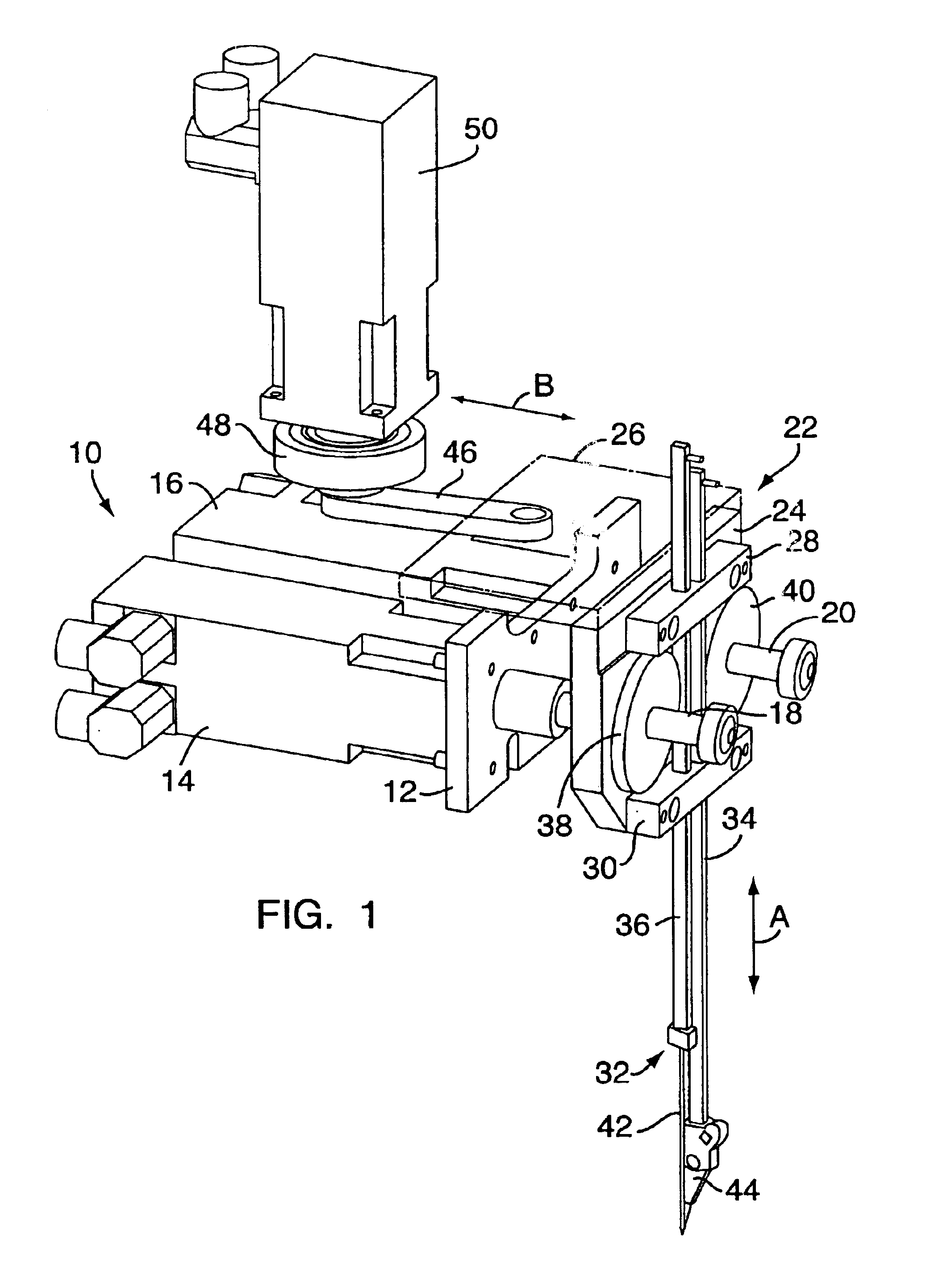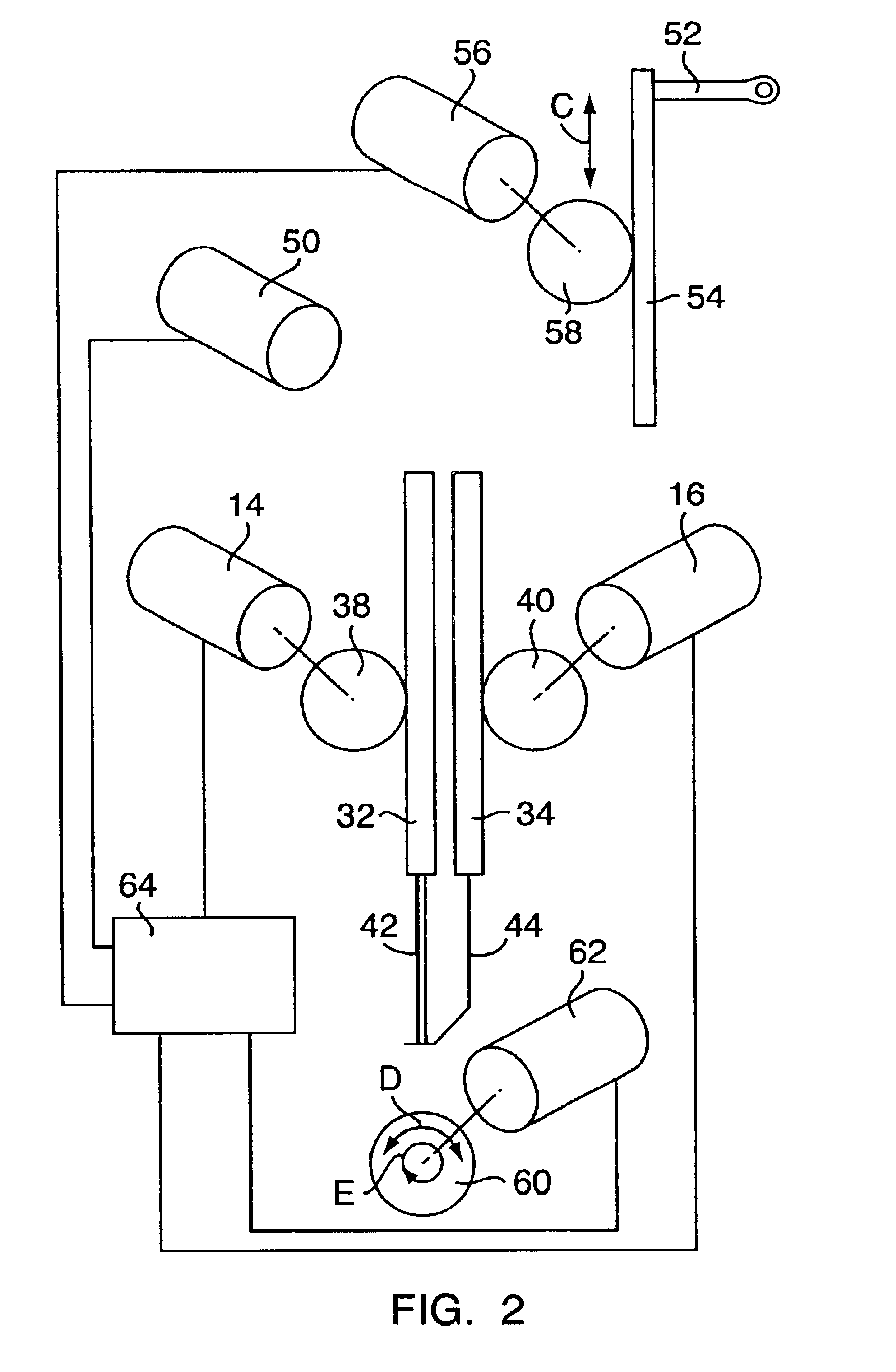Sewing machine
a sewing machine and needle technology, applied in the field of sewing machines, can solve the problems of increasing the cost of controlling the plurality of electromagnets, requiring relative many individual parts, and relatively large mass, and achieve the effect of high flexibility in control and the highest possible precision
- Summary
- Abstract
- Description
- Claims
- Application Information
AI Technical Summary
Benefits of technology
Problems solved by technology
Method used
Image
Examples
Embodiment Construction
[0015]FIG. 1 shows a sewing machine upper portion, indicated generally at 10, with a plate 12 which is a part of a frame or housing. On the plate 12 and connected to it by flanges are a first and a second servo motor 14 and 16, whose shafts 18 and 20 extend through and outwardly beyond the plate 12.
[0016]Mounted on the frame in a non-illustrated way is slide 22 which includes a support plate 24 parallel to the plate 12 and a plate 26, indicated by broken lines only, perpendicular to the support plate 24 and guided for shifting movement in the direction of the double arrow B. On the support plate 24 are guides 28, 30, and a needle rod 32 and a sewing foot or presser foot rod 34, both guided for up and down movement in the direction of the double arrow A. Each of the rods 32 and 34 has a rack strip 36 standing in meshing engagement with a pinion 38, 40 supported on the support plate 24. The pinions 38 and 40 are axially shiftably arranged on the shafts 18 and 20 and are fixed against ...
PUM
 Login to View More
Login to View More Abstract
Description
Claims
Application Information
 Login to View More
Login to View More - R&D
- Intellectual Property
- Life Sciences
- Materials
- Tech Scout
- Unparalleled Data Quality
- Higher Quality Content
- 60% Fewer Hallucinations
Browse by: Latest US Patents, China's latest patents, Technical Efficacy Thesaurus, Application Domain, Technology Topic, Popular Technical Reports.
© 2025 PatSnap. All rights reserved.Legal|Privacy policy|Modern Slavery Act Transparency Statement|Sitemap|About US| Contact US: help@patsnap.com



